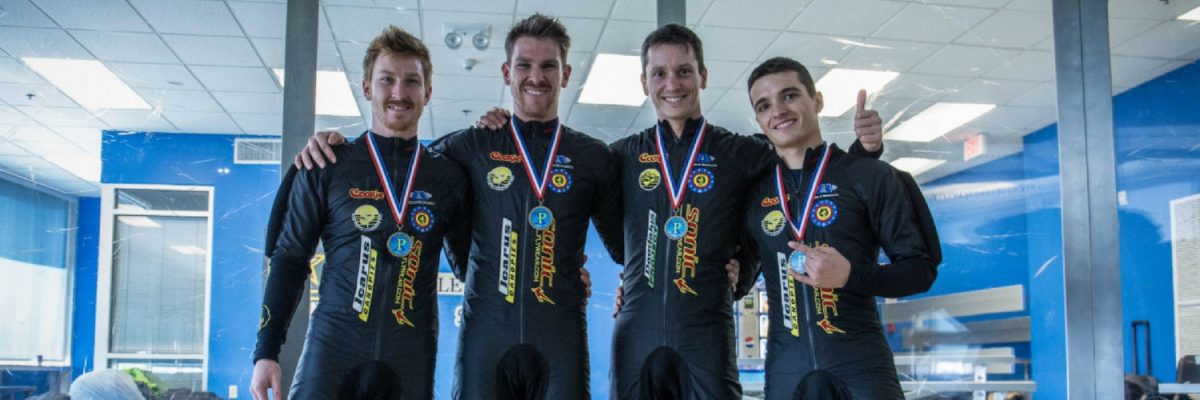
Indoor Skydiving: How Wind Tunnels Have Transformed Our Sport
Sunday, April 24, 2016
- Team XP
- 4/24/16
- 0
- Indoor Skydiving, Skydiving
Indoor Skydiving: How Wind Tunnels Have Transformed Our Sport
Indoor skydiving was first introduced as a concept in the 1960s by the US military. Today, wind tunnels (the facilities for indoor skydiving) exist across the States and are used by skydivers and non skydivers alike.
Wind tunnels have transformed the sport of skydiving in a number of ways, providing new training opportunities, chances for younger people to experience freefall and the access to longer periods of human flight than ever before.
As indoor skydiving has grown in popularity, it’s evolved from a skydiving simulator to a sport in its own right. Many of today’s indoor skydivers may never jump from a plane, with more and more young flyers achieving success in indoor competitions.
Here, we’ll explore how indoor skydiving has transformed the sport of skydiving. If you’d like to find out more about indoor skydiving here at Paraclete XP, contact us today.
Indoor skydiving for skydivers
Indoor skydiving is a great training tool for skydivers. From beginner skydivers through to the world’s top skydiving teams, the wind tunnel provides an opportunity to hone flying skills and practice moves which can be transferred to the sky.
Outdoor skydiving is quite different to its indoor counterpart. Perhaps the most important difference is the amount of time spent in freefall; outdoors, skydivers have around 60 seconds (depending on exit height and deployment altitude) in freefall, while indoor skydiving sessions can last hours.
The clear benefit to this is that flyers have more working time in the airflow to practice their skills and work on improvements. Unlike outdoor skydiving, you don’t have to spend time landing and packing parachutes, and can instead have a quick debrief in the holding chamber before hopping back into the airflow to try again.
In this way, indoor skydiving provides a fantastic opportunity for skydivers to train. Whether you’re working on relative work or freeflying, you’ll typically experience much faster progression indoors than you would jumping out of the plane.
Indoor skydiving for non-skydivers
For non-skydivers, wind tunnels are a really fun place to experience freefall without having to jump out of a plane. You’ll be supported in the tunnel by an experienced instructor, who will help you to enjoy the sensations of body flight in a controlled environment. Many wind tunnels have viewing chambers, meaning your friends and family can watch as you fly.
Non skydivers will usually fly for much shorter periods of time than skydivers. Typically, sessions for first timers include just 4 minutes of flying time – but you’ll be surprised by how long this feels!
In the US, you must be over the age of 18 to make an outdoor skydive. There are no such restrictions for indoor skydiving, making it accessible to all ages.
Transitioning from indoor to outdoor skydiving
While there are many benefits to training indoors, skydivers recognise the ongoing need to practice outdoors, too.
Even the best indoor skydiving facilities fail to simulate the complete skydiving experience and elements such as ‘the hill’ (the relative wind that is provided initially by the forward movement of the aircraft), as well as the adrenaline of jumping from a plane and all the components of canopy flight, can still only be accessed through outdoor skydiving.
The main difference for first time flyers is that, while skydivers can relate the skills of indoor skydiving to outdoor skydiving, non-skydivers will have a completely different experience in the wind tunnel than they would jumping from a plane.
Indoor skydiving is a thrill itself, and many people will choose to experience both indoor and outdoor skydiving in their lifetime. If you’d like to try indoor skydiving for the first time, or if you’re an experienced skydiver looking for a place to train, book your session today or get in touch for more information.
Tags: indoor skydiving, skydiving, wind tunnel

We have been twice now and absolutely love it and are already planning our next family flight! Andy, Derek, and all of the staff have been amazing. They are excellent with both kids and adults, and our 4 year old daughter can't get enough! The facility is top notch, and they ensure you have a safe and REALLY fun time. You can tell everyone loves what they do, and it more than their job - it is their passion. I would HIGHLY recommend this for kids and families, and they even offer birthday party packages.
Bobbie Jean Fraley
Copyright © 2025, Paraclete XP Indoor Skydiving, All Rights Reserved.
DropZone Web Design & Marketing by Beyond Marketing, LLC


